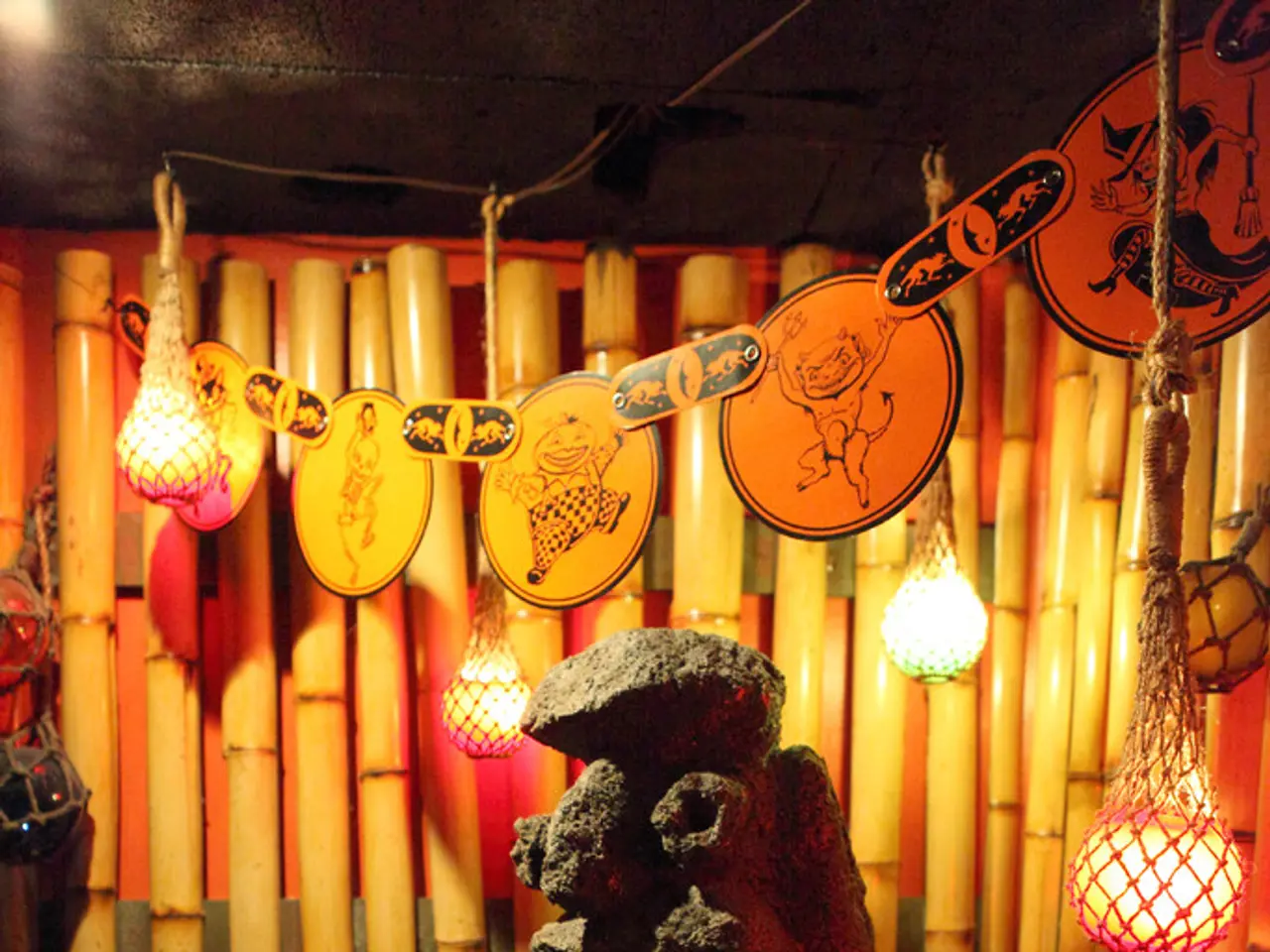Ancient Sandstone Sculptures of Humans Reemerge on Hawaiian Shoreline After Centuries of Invisibility.
The shores of Oahu have recently unveiled a remarkable discovery - a set of giant petroglyphs, believed to be over 500 years old, hidden under shifting sands for years[1][2]. These carvings, known as ki'i pōhaku, were discovered in 2016 at the Pililaau Army Recreation Center beach, near Waianae[1].
The petroglyphs, numbering 26, depict human-like figures, some with male genitalia and varying postures, carved centuries ago by Native Hawaiians directly into the shoreline's sandstone[1]. They range in size from 15 cm to over 2 meters and stretch along about 35 meters (115 feet) of the rock face[1][2].
The age of the petroglyphs is estimated around 500 to 600 years old, based on associated radiocarbon dating from nearby site complexes, such as calibrated dates around 1480, aligning with the time of Polynesian settlement in Hawaii[3].
These carvings serve as visual expressions of identity, spirituality, and possibly markers or stories related to land ('the land is our family'). They tend to tell a moʻolelo, or story of the place[3]. The largest figure spans more than eight feet in height and width[1].
Glen Kila, a Native Hawaiian cultural practitioner, believes the largest petroglyph represents Maui, the demigod[4]. However, the precise meanings of the glyphs remain open to interpretation. No consensus has been reached on the full meaning behind the carvings[4].
The petroglyphs are located in a fragile sandstone surface right on the shoreline, making them uniquely vulnerable, exposed to the pounding surf and wind when the sand recedes[1]. The wind and waves will eventually reclaim the site, cloaking the figures beneath sand[5].
Dave Crowley's team, which manages over 1,800 archaeological sites across Oahu and the Big Island, is working to preserve these ancient artworks. They use 3D photogrammetry to create digital replicas of sites like the petroglyphs for preservation[6].
The presence of these petroglyphs provides insight into early Hawaiian settlement, social organization, and cultural practices, offering a unique connection to the Polynesian settlers’ history in Hawaii and connecting present-day Hawaiians with their ancestral heritage through ancient symbolic art[1][3].
References:
- Hawaii News Now. (2016, June 16). Ancient Hawaiian petroglyphs discovered at Waianae beach. Retrieved from https://www.hawaiinewsnow.com/2016/06/16/ancient-hawaiian-petroglyphs-discovered-at-waianae-beach/
- Honolulu Star-Advertiser. (2021, November 29). Petroglyphs at Pililaau reappear after storms. Retrieved from https://www.staradvertiser.com/2021/11/29/breaking-news/petroglyphs-at-pililaau-reappear-after-storms/
- Archaeology.org. (2019, March 21). Discovering the ancient petroglyphs of Oahu. Retrieved from https://www.archaeology.org/issues/2019032100/discoveries/discovering-ancient-petroglyphs-of-oahu
- KHON2. (2021, November 30). Native Hawaiian cultural practitioner believes largest petroglyph represents Maui. Retrieved from https://www.khon2.com/news/local-news/native-hawaiian-cultural-practitioner-believes-largest-petroglyph-represents-maui/
- The Guardian. (2021, November 30). Hawaii petroglyphs reveal ancient stories of Polynesian settlers. Retrieved from https://www.theguardian.com/us-news/2021/nov/30/hawaii-petroglyphs-reveal-ancient-stories-of-polynesian-settlers
- Hawaii Public Radio. (2021, November 30). Archaeologists are using 3D technology to preserve Hawaii's endangered petroglyphs. Retrieved from https://www.hawaiipublicradio.org/posts/2021-11-30/archaeologists-are-using-3d-technology-to-preserve-hawaiis-endangered-petroglyphs
- The discovery of the 26 giant petroglyphs, aged around 500 to 600 years old, serves as a valuable resource for research into Native Hawaiian history, lifestyle, and environmental awareness, as these carvings represent visual expressions of their spirituality and cultural practices.
- The presence of these petroglyphs, depicting human-like figures and found directly on Oahu's shoreline, highlights the significant connection between the earth, outdoor living, and home-and-garden, as the natural environment played an essential role in the creativity and spirituality of the ancient Hawaiian people.
- The unique vulnerability of these carvings, exposed to the relentless wind and pounding surf, makes them not only an impressive representation of the past but also a reminder of the fragile balance between science, human actions, and the environment.
- As the meanings behind these ancient artworks remain open to interpretation, they encourage both researchers and the general public to ponder the ongoing influence of the past on modern lifestyle and the importance of understanding and preserving our environment for future generations.





